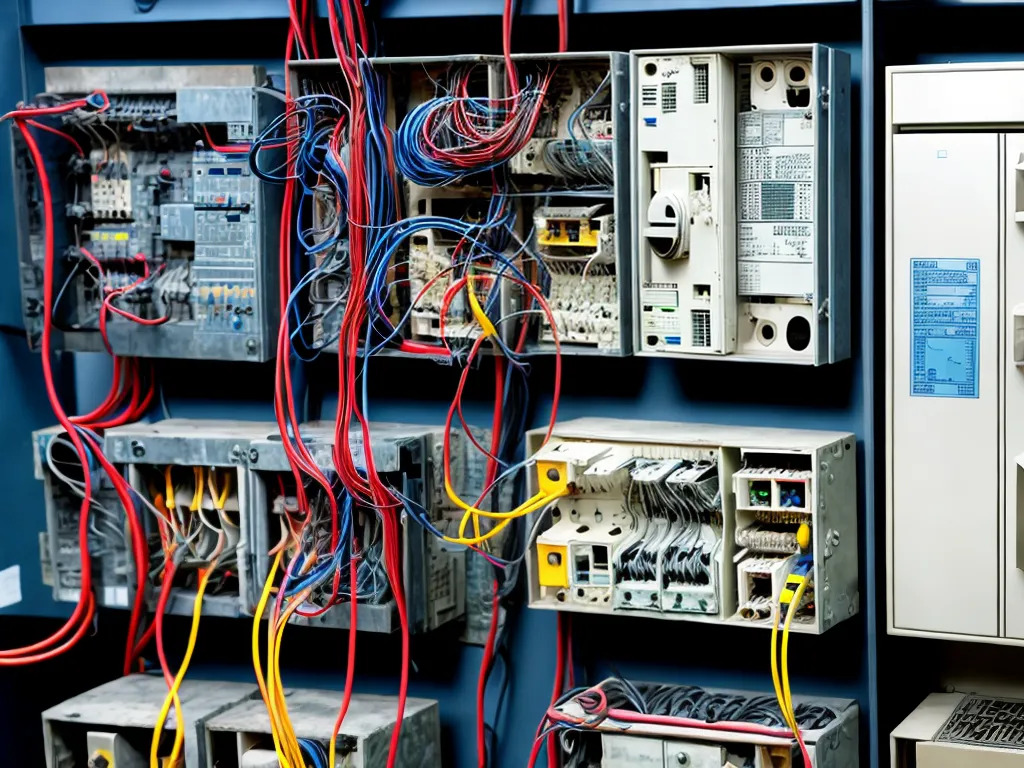
Maintaining obsolete control panels and electrical systems can be challenging but is crucial for safety and continued operations. As the owner of an industrial facility, I often face the dilemma of keeping decades old equipment running despite difficulty finding spare parts and documentation. Here is my guide to maintaining these obsolete systems based on years of hands-on experience.
Understanding the Equipment Lifecycle
To maintain obsolete equipment, you first need to understand where it exists in the equipment lifecycle. Electrical systems and control panels follow a typical progression:
- New - Recently installed and under warranty from the supplier. Replacement parts and support are readily available.
- Mature - Systems are well understood and functioning. Routine maintenance is straightforward.
- Obsolete - Systems are discontinued by the supplier. Documentation and spare parts can be difficult to obtain.
- Unsupported - Systems no longer function properly and cannot be repaired or maintained even by third parties. Complete replacement is required.
The goal is to keep electrical and control systems in the mature phase as long as possible through careful maintenance procedures. However, eventual obsolescence is inevitable.
Performing Risk Assessments
The first priority is assessing safety risks associated with operating obsolete equipment. Electrical hazards resulting from degradation over decades of use need to be identified. Typical risks include:
- Damaged or outdated wiring and insulation leading to shorts
- Corroded connections and contact points causing high resistance
- Failed or operating-outside-spec components leading to voltage/current spikes
- Lack of modern safety features and sensors to detect issues
I perform detailed risk assessments on all obsolete electrical systems focusing on potential points of failure and their consequences. I also evaluate risks to operations and production capabilities if the obsolete equipment unexpectedly fails.
Thorough risk assessments allow me to prioritize my maintenance efforts on obsolete equipment most prone to dangerous failures. I re-evaluate risks frequently as equipment ages further.
Performing Preventative Maintenance
To keep obsolete equipment from failing unexpectedly, I follow comprehensive preventative maintenance procedures tailored to each system. Typical tasks I perform include:
- Visual inspections - Check for damaged/degraded components, frayed wires, corrosion, dirt/debris accumulation.
- Cleaning - Gently clean away dust and grease without damaging antique components.
- Testing - Use multimeters to check voltages/currents at key points and verify they are within spec.
- Lubricating - Keep motors and moving parts lubricated per OEM manuals to prevent seizure.
- Re-termination - Tighten any loose wire connections and replace degraded insulation.
I maintain thorough maintenance logs of each task performed and any anomalies found. I can then spot trends and predict which components may require replacement soon.
Maintaining Adequate Spare Parts Inventory
Finding spare parts for obsolete equipment can be difficult. Manufacturers discontinue stocking components, parts go end-of-life, and supply chains dry up. I maintain a spare parts inventory for critical components that may fail:
- Motors
- Relays
- Circuit boards
- Controllers
- Sensors
Parts are sourced everywhere - eBay, industrial surplus vendors, contacting OEMs. Stocking adequate spares for repairs minimizes downtime when failures do occur.
I keep detailed records of model/part numbers and carefully store spares in ideal conditions to prevent degradation. Spares are continuously tested to confirm they remain functional.
Retrofitting and Upgrading Components
In some cases I am able to upgrade obsolete control panels and electrical systems by retrofitting newer components:
- PLC replacements - New PLCs can sometimes be integrated to replace obsolete proprietary logic units.
- Improved sensors - Better vibration, flux, pressure sensors can be installed to get more data.
- Digital interfaces - Can potentially add displays, USB ports, ethernet networking to transfer data.
- Re-wiring - May be possible to replace damaged wiring or add shielding.
However, upgrades are done carefully so as not to impact core functionality or the system's ability to operate as expected. Safety remains the top priority.
Knowing When It's Time to Replace
Despite best efforts to maintain them, eventually the day comes when obsolete electrical systems must be replaced completely. Determining this point requires:
- In-depth failure analysis - Assess the frequency and impact of failures to determine if replacement makes business sense.
- Cost-benefit analysis - Compare the cost of continual maintenance versus new equipment investment.
- Risk analysis - Consider if safety issues make replacement mandatory despite other factors.
I involve operations teams in the equipment replacement decision process. Together we determine if the obsolete system has reached the end of its maintainable lifespan.
Summary
Maintaining obsolete industrial control panels and electrical systems is challenging but doable with careful maintenance practices. Safely operating decades old equipment requires in-depth knowledge of potential failure points. Investments in spare parts and preventative maintenance pay off in prolonged equipment lifetimes. Eventually however, replacement becomes the only viable option. With this experience-based guidance, you can keep your obsolete critical equipment running safely as long as possible. Let me know if you have any other questions!